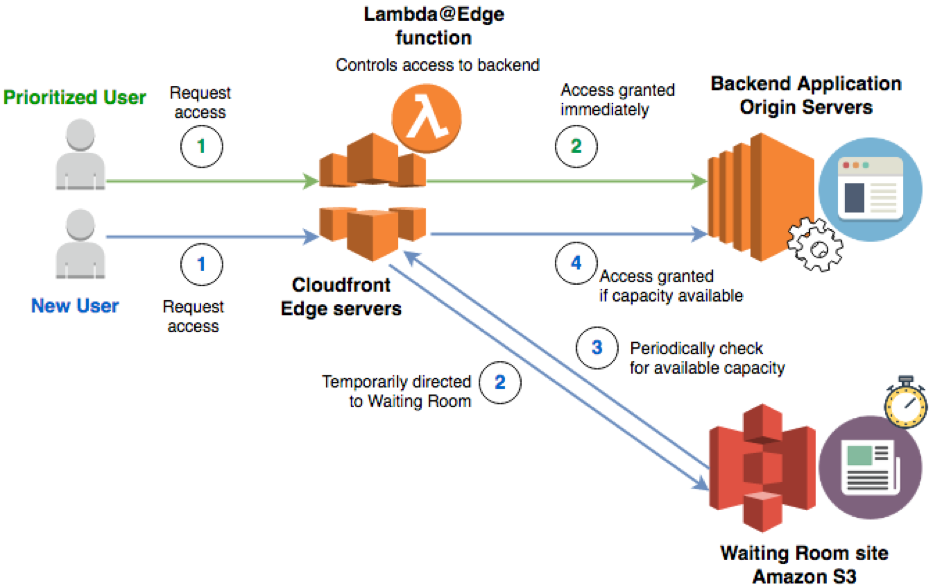Networking & Content Delivery
Category: Amazon CloudFront
Aggregating Lambda@Edge Logs
Just as with AWS Lambda, Lambda@Edge supports logging to CloudWatch, which can help you to troubleshoot your Lambda function code or to log custom data that is not available in CloudFront access logs. Lambda@Edge functions are replicated around the world so CloudFront can invoke them closer to your end viewers, and CloudWatch log files for […]
Managing Lambda@Edge and CloudFront deployments by using a CI/CD pipeline
As promised in my previous post of this series about Lambda@Edge, in this new blog post I’m sharing some best practices for managing a Lambda@Edge application. So how do you roll out code or configuration changes to a Lambda@Edge function and Amazon CloudFront distribution in a safe and controlled way? Over time, as your application evolves, you’ll […]
Ten years of securing, accelerating, and scaling apps around the world – Amazon CloudFront marks its 10th anniversary.
First of all, thank you to each and every one of you who use the Amazon CloudFront service every day. CloudFront’s growth and evolution over the past decade would not have been possible without your feedback—input that has shaped the service since day one. We are excited to have just celebrated our 10-year anniversary of […]
Amazon CloudFront Announces New Edge Locations in the United Arab Emirates
Amazon CloudFront is excited to formally announce the launch of two new Edge locations in the United Arab Emirates: Dubai and Fujairah. The launch of these two Edge locations helps extend the benefits of AWS services closer to your end viewers. CloudFront’s integration with other AWS services like Amazon S3, EC2, AWS Shield, AWS WAF, […]
Leveraging Lambda@Edge for AdTech: Cookie Syncing at the Edge
In online advertising, cookies play a key role in identifying and profiling users. They allow advertisers to display targeted and personalized ads to users as they browse the internet, from a desktop browser or mobile browser. Advertisers can achieve this personalization by assigning a cookie to users when their ads are displayed on websites or […]
Building a Serverless Subscription Service using Lambda@Edge
Personalizing content helps to drive subscriptions, improve revenue, and increase retention rates by providing a more engaging and responsive customer experience. In this blog post, we’ll show you how to build a serverless subscription service for your website that personalizes and monetizes content by using Amazon CloudFront and AWS Lambda@Edge. Customers have typically used content delivery networks […]
Simple Serverless Video On Demand (VOD) Workflow
This post discusses the basics of setting up a simple serverless video on demand (VOD) workflow so you can experiment with streaming video with minimal configurations required. (If you have a more advanced VOD use case, check out this post and CloudFormation template from AWS Answers.) To setup a serveless video transcoding workflow, you first […]
Global Data Ingestion with Amazon CloudFront and Lambda@Edge
Special thanks to Raul Frias for contributing to this blog post Lambda@Edge enables you to run AWS Lambda functions globally so that you can process and respond to user requests at low latencies. Running Lambda functions in close geographical proximity to users helps satisfy a number of use cases, such as website personalization, Search Engine […]
Visitor Prioritization on e-Commerce Websites with CloudFront and Lambda@Edge
For online retailers, the annual holiday season, special sales and new product launches are all exciting events that typically drive a rapid increase in site traffic. With Amazon CloudFront and Lambda@Edge, you can now build a Flash Crowd Management workflow that lets you control what proportion of incoming shopper traffic is allowed to access your backend application, while directing the remaining shoppers to a temporary waiting room- an alternate site where you can provide them a branded experience while they await their turn to access the application.
AWS Best Practices for DDoS Resiliency – Updated Whitepaper Now Available
Come read the 2018 version of the AWS Best Practices for DDoS Resiliency whitepaper. In this whitepaper, we provide you with prescriptive DDoS guidance to build applications that are resilient to DDoS attacks. We describe different attack types, such as volumetric attacks and application layer attacks, and explain which best practices are most effective to manage each attack type.









